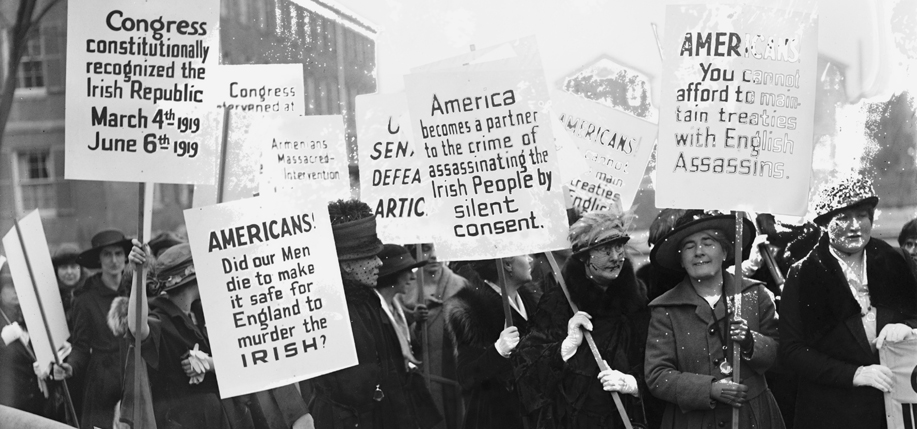After the Executions, circumstances changed. Britain made the error of going all out against the remaining leaders, and tales of James Connolly being killed while strapped to a chair, or Joseph Plunkett’s ill-fated marriage drawn to an abrupt close soon filled American papers. Britain’s reaction was seen as extremely excessive, and the near-destruction of a good area of Dublin, an important trading hub, was reacted to extremely unfavorably. Rather than being seen as rabble-rousers and traitors to their country, the uprisers became martyrs to their cause. In the American populace’s eyes, their status as prisoners of war should have left them safe from execution, and Britain had betrayed this precedent.
Comparisons started to be drawn towards the American Revolution, with the British once again portrayed as the oppressive, imperial force, and the Irish being seen as not so different from the plucky colonials a couple of centuries before. The leaders’ execution was seen as what probably would have happened if the Revolutionaries had lost their bid for independence, and thus generated more sympathy.
The ongoing coverage of the Uprising and its aftermath ran in the New York Times for weeks, and kept the issue in the forefront of the public mind. Ultimately, a need for a break arose from the consistent coverage of the slaughterfest that was Verdun, and the quick-lived Uprising, occurring within the country’s closest ally in Europe, was a welcome respite. The coverage was especially popular amongst Irish American individuals who wished to keep up to speed with what was going on in their homeland, and the papers continued circulation.
The Rebels’ decision to seize the main communications hub in Dublin ultimately went a long way in withholding information from leaking out about the Rising. Several correspondants with the New York Times put their lives on the line in an attempt to get as much information as possible, filling their reports with stories that were just as often truthful as they were fictional. The Times continued even after the Rising was over, providing a comprehensive guide to the executions as each one occurred, helping to keep them fresh in the public mind.

Even with all of these factors, the public’s response remained relatively unchanged. Events such as the leaking of the Zimmerman Telegram, which offered Mexico the territory it lost to the United States if it declared war on them, helped to push America towards the Allies. Irish and German Americans were forced to silence their dissent in fear of bearing the brunt of Nationalist backlash. The Uprising went to the wayside as the United States officially entered the War on the side of the Allies.
With that being said, the Rising still lived on in many Irish American communities. A series of “Indignation Meetings” were held in New York City, gatherings in which Irish-American people showed their support for their fellow people in Ireland. The iconic New York City St. Patrick’s Day Parade, which had began all the way back in 1762, took on new symbolic meaning amongst Irish Americans. It was not only a celebration of one of Ireland’s greatest figures, but a celebration of Irish ideals, an event in which Irish people could band together and show their solidarity. Visit this page if you wish to know how the Rising is celebrated in the present day, and here to find out some present day views on the Rising.
